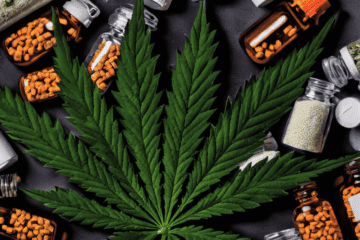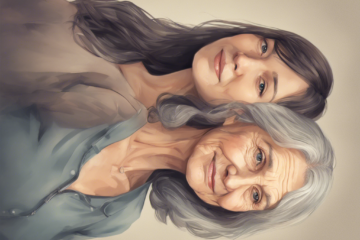Are plastic surgeries here to stay? What’s driving the increasing number of people worldwide to consider altering their faces or bodies? Is it all about beauty standards, and trends, or is there something more at play?
The Beauty Standards Around the World
The standards of beauty differ across civilizations. For example, what is deemed beautiful in India is distinct from what is considered beautiful in Italy, Africa, or Sweden. Here are some fascinating examples:
In Western societies, the ideal woman is tall and slender with delicate features, yet sporting prominent lips. A small waist paired with voluptuous breasts and a curvaceous bum is highly desired. Achieving this look may seem challenging, but surgeries offer a pathway to attain it.
In Brazil, women are fixated on having larger buttocks and muscular legs, often resorting to implants through surgery. Brazil ranks as the second-largest consumer of plastic surgery globally, with 1.2 million procedures performed annually. Unfortunately, the scarier aspect is that many clients end up in the hands of unqualified surgeons, leading to infections and life-threatening situations.
Korea’s renowned beauty standard is pale, porcelain skin, which has gained popularity worldwide in recent years. Korean products flood the global market, promising to combat aging and maintain a youthful, fresh appearance. This preference for lighter skin stems from historical associations with lower social status for darker skin, raising concerns about underlying racism.
In India, having thick, lustrous hair is one of the most coveted traits. Indian women also strive to lighten their skin tone and achieve a slimmer body, seemingly aiming to conform to Western beauty standards.
New Zealand’s beauty standards are intriguing, where Maori people adorned with face tattoos, particularly on the chin and lips, are considered more beautiful.
In Myanmar (Burma), the native Kayan women have a distinctive tradition to enhance their beauty. From a young age, they wear brass coils around their necks, creating an illusion of elongation. Over time, as more coils are added, the shoulders are pushed down, creating the appearance of a longer neck, which is believed to be a way to attract men from the tribe.
Timeless Beauty – Is there such a thing?
What is considered beautiful today may have been entirely different in past decades, showcasing the ever-evolving standards of beauty.
In the Ancient Greek era (c. 500-300 B.C.), a beautiful woman was characterized by her fair skin and curvaceous body. A plump physique was an indicator of wealth, suggesting access to an abundance of food during that time.
During the Han Dynasty (206 B.C.-220 A.D.), small feet were highly prized as the epitome of beauty. Young girls underwent tight foot bindings to prevent their feet from growing, leading to severe disfigurement and reducing their feet to a mere 3-4 inches in length. While foot binding is now illegal, some elderly women continue this practice in secrecy, adhering to tradition.
In the Italian Renaissance (c. 1400-1700), a woman’s beauty, especially as a wife, was meant to reflect her husband’s status through her curves. A man’s wealth was associated with having a wife with a fuller figure.
Watch this captivating video exploring the standards of female beauty over time: “What have been the standards of Female Beauty over Time? – From Renaissance to Present Day.”
Until recently (c. 2000), a slim silhouette was considered the ideal body shape. However, that changed with the rise of Kim Kardashian, who influenced entire generations toward a specific aesthetic. This new ideal included big lips, large breasts, a tiny waist, a pronounced butt, and even a thigh gap. Achieving such a body, which is naturally difficult for most people, has prompted many to turn to cosmetic plastic surgeries to emulate Kim’s look.
What Is Cosmetic Surgery?
Cosmetic surgery offers individuals the opportunity to address imperfections such as wrinkles, saggy skin, and excess fat, among others. Its primary aim is to enhance a person’s appearance, boost self-esteem, and elevate self-confidence. Procedures can be carried out on any facial or body part.
Moreover, plastic surgeries are not only utilized to correct specific areas but also to modify naturally youthful and healthy features to align with societal beauty standards. For example, individuals may opt for procedures to achieve fuller lips, larger breasts, or more prominent buttocks.
The Most Common Surgeries
According to the American Society of Plastic Surgeons, the most common cosmetic procedures (invasive and minimally invasive) are listed here:
- Breast augmentation or enlargement (augmentation mammoplasty)
- Breast implant removals
- Breast lift (mastopexy) with or without the placement of an implant
- Buttock lift
- Chin, cheek, or jaw reshaping (facial implants or soft tissue augmentation)
- Dermabrasion
- Eyelid lift (blepharoplasty)
- Facelift (rhytidectomy)
- Forehead lift
- Hair replacement or transplantation
- Lip augmentation
- Liposuction (lipoplasty)
- Lower body lift
- Nose reshaping (rhinoplasty)
- Thigh lift
- Tummy tuck (abdominoplasty)
- Upper arm lift (Brachioplasty)
- Botox injections
- Cellulite treatment
- Chemical peel
- Plumping, or collagen or fat injections (facial rejuvenation)
- Laser skin resurfacing
- Laser treatment of leg veins
- Vaginal rejuvenation
Cosmetic surgery in the United States
In 2020, the United States registered the highest number of cosmetic procedures worldwide. The number of surgical and nonsurgical cosmetic surgeries in the U.S. has grown over the last decade, from around 1.6 million procedures in 1997 to over 5.5 million in 2020.
What’s the catch with society’s high comfort level with Cosmetic Surgeries?
Enhancing Self-Confidence and Self-Esteem:
Nearly everyone has a part of their body or face they perceive as less than ideal. We often find ourselves glancing in the mirror, contemplating how to “fix” these perceived flaws—be it the belly, posture, hips, or cheeks. So, if there’s a chance to address these concerns permanently, why not take it? It’s expected that doing so will leave us feeling more content and positive about ourselves.
Correcting Physical Imperfections:
One of the motivations behind opting for plastic surgery is to rectify physical imperfections like birthmarks, scars, or deformities. Similarly, individuals may seek surgical interventions to address injuries or accidents that have left them with such imperfections.
Embracing a Youthful Image:
Whether through a surgical procedure or a simpler treatment like Botox, many individuals seek ways to regain a sense of youthfulness. These interventions offer a means to defy the effects of aging, ultimately leading to increased self-confidence.
Conforming to Societal Expectations:
Regrettably, the influence of “perfect” images portraying seemingly flawless individuals with impeccable bodies can take a toll on how we feel about our own appearance. Consequently, many people turn to surgical solutions as a way to meet societal beauty standards.
Excessive obsession with outward appearance
Everyone desires to feel loved and accepted, as humans are inherently social beings, seeking to fit into society based on consequences. It’s natural to crave admiration and likability up to a certain point. However, what happens when we become fixated on these desires and cross the boundaries?
Consider the following scenarios:
Comparing disliked body parts to those of others.
Constantly concealing perceived flaws with clothing, makeup, or adjustments to body position.
Pursuing corrective surgeries.
Excessively checking or avoiding the mirror.
Spending an excessive amount of time and effort on grooming.
Changing clothes excessively.
Exercising excessively.
All of these behaviors can be symptoms of a mental disorder called Body Dysmorphic Disorder (BDD). BDD affects a significant percentage of the US population, approximately 1.7%-2.9%, which translates to 1 in 50 people. The causes of BDD may be genetic or rooted in socio-cultural factors, such as unrealistic beauty standards, criticism of appearance (especially from parents), or experiences of bullying.
Can We Have A Successful Career And A Happy Life Without Cosmetic Surgeries
We invest an excessive amount of energy in our appearance, yearning for others’ acceptance and doing our best to radiate beauty. The belief that attractive individuals have more opportunities, charm, and easy success often drives this obsession.
We crave admiration from our partners and hope to unlock greater business prospects through our looks. However, I firmly doubt that a pretty face or a slim figure alone can secure a healthy and happy relationship or the desired professional position if one lacks self-awareness and sufficient qualifications.
Yes, there are many companies openly seek attractive individuals, often specifying women. However, conforming to such a sexist expectation raises concerns. We must maintain a critical mindset and remember that in the world of social media and TV, we’re essentially the product being sold for free.
It’s not that we aren’t “enough” as we are; it’s merely that we represent potential customers in this beauty-centric culture. Instead of blindly conforming, let’s empower ourselves to challenge these norms and embrace our true worth beyond mere appearances.
Impact of Social Media
Between 2020 and 2021, there was a notable 40% surge in facial plastic surgery procedures, as reported by the American Academy of Facial Plastic and Reconstructive Surgery (AAFPRS). This increase can be attributed in part to the influence of social media, which has transformed the landscape of discussing plastic surgery.
In the past, conversations about plastic surgery were shrouded in secrecy, but now, with the power of social media, people are more open about their experiences. Platforms like Instagram and Facebook make it easier for individuals to showcase their procedures and share their “before” and “after” transformations. As a result, the stigma surrounding plastic surgery has notably lessened, allowing people to feel more liberated about their choices.
This shift in societal attitudes has also benefited marketers and cosmetic product promoters. They find it easier to showcase their products and services through social media platforms, which allows them to reach a broader audience. Additionally, for surgeons, it has become simpler to showcase their work and expertise, further fueling the cycle of increasing interest and acceptance of plastic surgery.
The CRUX
Having a desire for a pleasing appearance is completely normal. Yet, we must introspect whether our efforts stem from seeking self-confidence or simply from a sense of perpetual dissatisfaction.
Caring for ourselves and dedicating time to enhance our appearance is important. Nevertheless, if these pursuits begin to encroach upon our quality of life and relationships, it’s crucial to seek assistance.
In most cases, we are already enough. However, we often become our own harshest critics, as no one else values us as much as we value ourselves.
Embrace a connection with yourself, including your body and imperfections. Prioritize exercise and self-care to nurture your well-being. By fostering a relationship with your inner self, you’ll gain insight into your abilities and true worth, discovering that you are more capable and valuable than you might realize. Consider exploring a new hobby as a starting point and remember to nourish your soul first and foremost.




